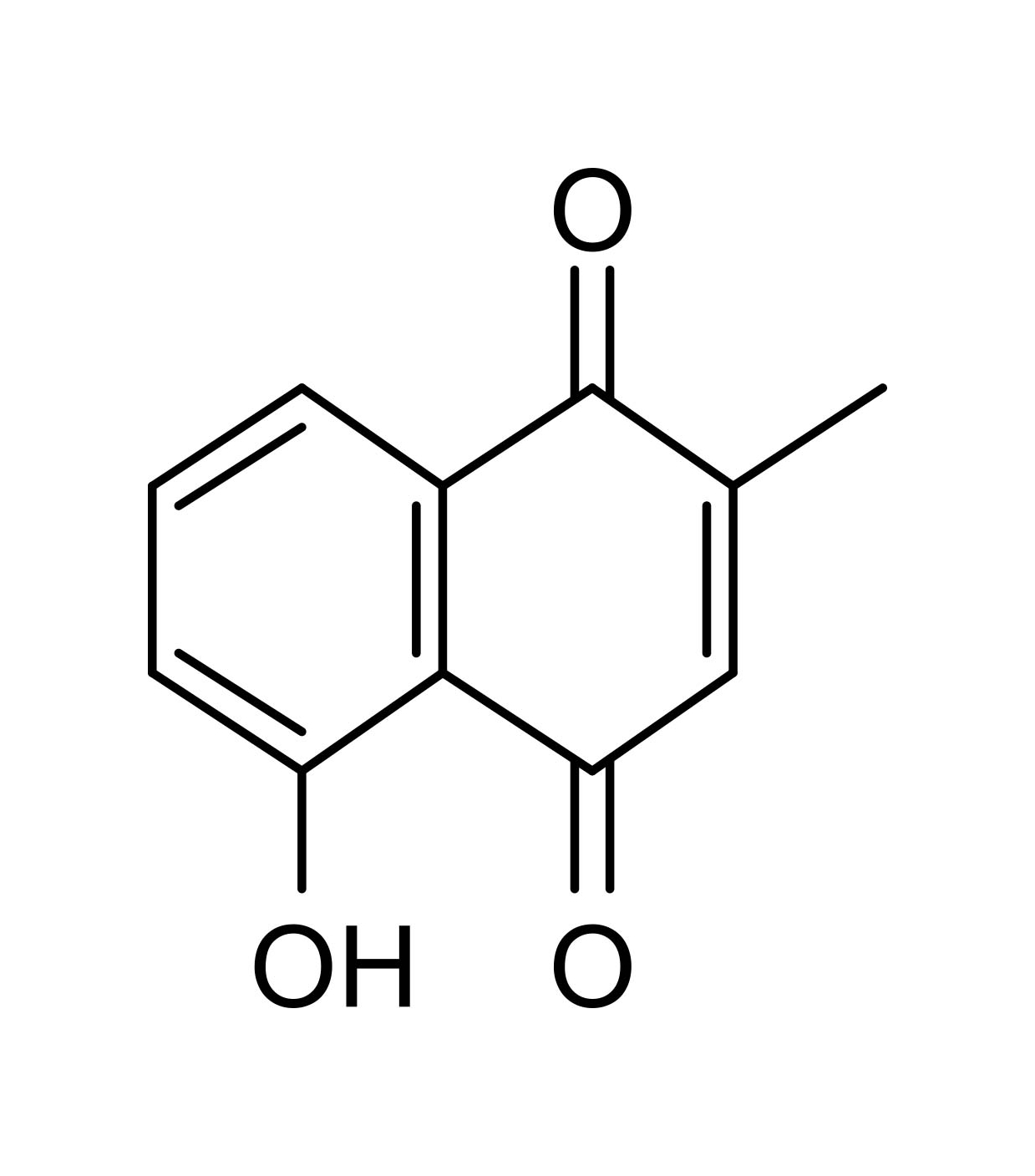Plumbagin
Plumbagin
$65.00 - 5 mg
$230.00 - 25 mg
All prices in Australian dollars
- Code
- BIA-P2586
- Synonyms
- 2-Methyljuglone, NSC 236613, NSC 688284, Plumbagine, Plumbagone
- CAS #
- 481-42-5
- Molecular Formula
- C11H8O3
- Molecular Weight
- 188.18
- Purity
- >95% by HPLC
- Long Term Storage
- -20°C
- Solubility
- Soluble in methanol or DMSO
Download Data Sheets
Application Notes
Plumbagin is a yellow-orange pigment isolated from Plumbagin and other plant species. Research into plumbagin dates back to the early 1800s, with its synthesis first being reported in 1936. Plumbagin has a broad biological activity, including bactericidal, fungicidal, tuberculostatic, larvicidal, nematocidal, ichthyotoxic, Anti-inflammatory and seed germination inhibitory activity, as well as weak insect antifeedant activity. Pumbagin’s activity is attributed to its effects on multiple signaling and apoptotic pathways, and its ability to undergo redox cycling property generating ROS. Plumbagin induces quinone reductase and glutathione transferase and is a potent inhibitor of NF- κB.
References
- Synthesis of plumbagin. Fieser L.F. & Dunn J.T. J Am Chem Soc. 1936, 58, 572.
- Bioactive naphthoquinone derivatives from Diospyros maritima BLUME. Higa M. et al. Chem Pharm Bull. 1998, 46, 1189.
- Perspectives on medicinal properties of plumbagin and its analogs. Padhye S. et al. Med Res Rev. 2012, 32, 1131.
- Induction of quinone reductase and glutathione transferase in rat tissues by juglone and plumbagin. Munday R. & Munday C.M. Planta Med 2000, 66, 399.



